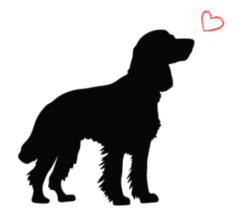Is your once well-mannered puppy now pulling on the lead again? Does it feel like they’ve gone backwards in their loose lead training? Are they focusing on the environment more than on you? Welcome to adolescence—your dog is officially a teenager.
Adolescence typically begins around six months of age and can last until 18 months to two years, depending on the breed. Unfortunately, this stage is one of the most common times when dogs are relinquished for rehoming.
It can be difficult to witness and accept your puppy seemingly changing overnight. During this phase of your dog’s life, their body is undergoing significant changes. Hormonal fluctuations associated with sexual maturity affect their behaviour, neurological development, and physical growth.
How Can You Help Your Teenage Dog Walk Nicely on a Loose Lead Again?
The key is to go back to basics. Let go of any expectations based on how they used to walk and start afresh. Use tasty treats to reward your dog whenever they walk on a loose lead or check in with you (look up at you). This positive reinforcement makes them more likely to repeat the behaviours in the future.
Start your training sessions in a low-distraction environment, such as your home, where your dog is more likely to listen, engage, and learn. Once they are confident at home, practise in the garden. Gradually increase distractions by working on lead walking outside your house, then progressing to a quiet walk where you are unlikely to encounter many people or other dogs.
We also recommend incorporating focus games into your routine to improve your dog’s engagement with you. Games like “Watch Me” are excellent for capturing their attention. Use these focus games before your walk begins to shift your dog’s focus to you, and apply them during the walk if needed to regain their attention. As with lead training, practise focus games at home first and gradually introduce distractions.
Training Tips
- Manage their environment by walking in quiet areas with less distraction.
- Practise each stage several times before moving on to the next.
- When changing the training environment, go back to step one and work through the progression again.
- Always use tasty treats your dog loves.
- Patience, calmness, and consistency are key!
